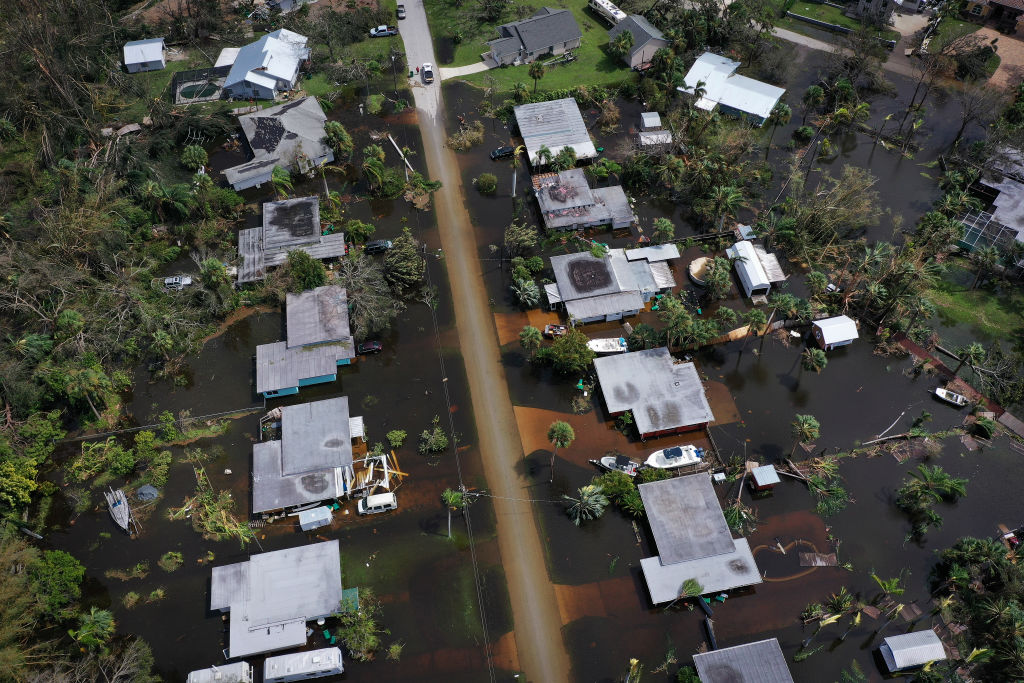
A massive hurricane, a historic drought, and 16 other major disasters across the US collectively racked up $165 billion in damages and killed at least 474 people in 2022, according to a National Oceanic and Atmospheric Administration (NOAA) analysis published Tuesday.
NOAA’s National Centers for Environmental Information track the biggest of the big disasters, each one costing at least $1 billion in damage. 2022 was the nation’s third most expensive year for billion-dollar disasters by NOAA’s ranking, following 2017 ($373.2 billion) and 2005 ($253.5 billion).
Billion-dollar disasters are the new normal in the US and the rest of the world. That’s because people continue to move and build in risky areas — and the risk itself increases as the planet gets warmer, wetter and more prone to extremes. Severe weather events and other disasters globally last year cost roughly $120 billion in insured losses and $270 billion in uninsured losses, according to estimates by insurance giant Munich Re. And all these disasters played out during the fifth-warmest year on record, estimates the European Union’s Copernicus Climate Change Service.
In the US, the single most damaging event was Hurricane Ian, which caused $112.9 billion in damages. The storm was also the most expensive disaster for insured losses worldwide, according to Munich Re. Ian rapidly intensified into a Category 4 hurricane that slammed into southwestern Florida with a lethal combination of storm surge, winds and rain. The result was a climate catastrophe: washed out roads and bridges, entire neighborhoods razed and power knocked out for millions. The loss of life was also staggering. At least 152 people died from the storm, according to NOAA’s count.
Another major event was the year-long drought and heat wave across several Western and Southern Plain states that caused $22.2 billion in damage. One study published in the journal Nature Climate Change estimated this prolonged period of dryness, which started prior to 2022, was the region’s worst in more than 1,000 years. Consequently, major rivers and lakes have been dwindling to dangerously low levels and in some cases running dry, including Lakes Mead and Powell and the Colorado River. Millions of people rely on this water.
The extreme heat tied to this dry spell killed more than 100 people across Arizona, Nevada, California, Oregon and Texas. But the federal government’s estimates are likely an undercount. In Arizona’s Maricopa County alone, for example, local officials identified 378 confirmed heat-associated deaths in 2022.
NOAA Administrator Richard Spinrad pointed to the role of climate change in disasters in a press conference on Tuesday. “Climate change is creating more and more intense, significant damage and often sets off cascading hazards, like intense drought followed by devastating wildfires, followed by dangerous flooding and mudslides,” he said, “as we’re seeing, for example, as a consequence of the atmospheric rivers in California right now.”
More Must-Reads From TIME
- The 100 Most Influential People of 2024
- How Far Trump Would Go
- Scenes From Pro-Palestinian Encampments Across U.S. Universities
- Saving Seconds Is Better Than Hours
- Why Your Breakfast Should Start with a Vegetable
- 6 Compliments That Land Every Time
- Welcome to the Golden Age of Ryan Gosling
- Want Weekly Recs on What to Watch, Read, and More? Sign Up for Worth Your Time
Contact us at letters@time.com